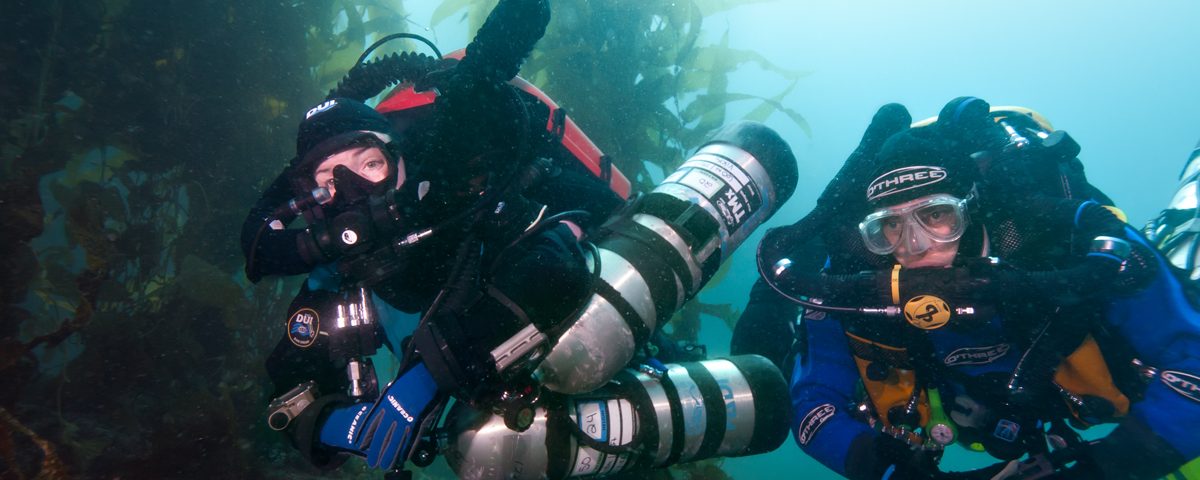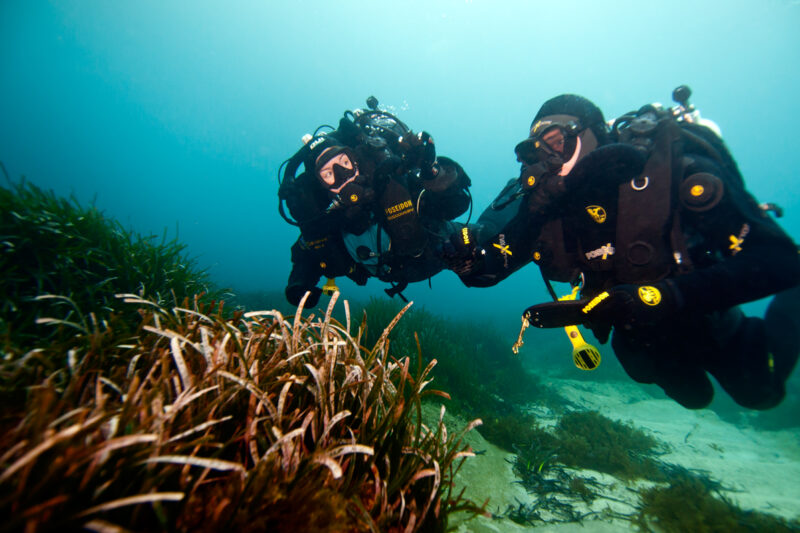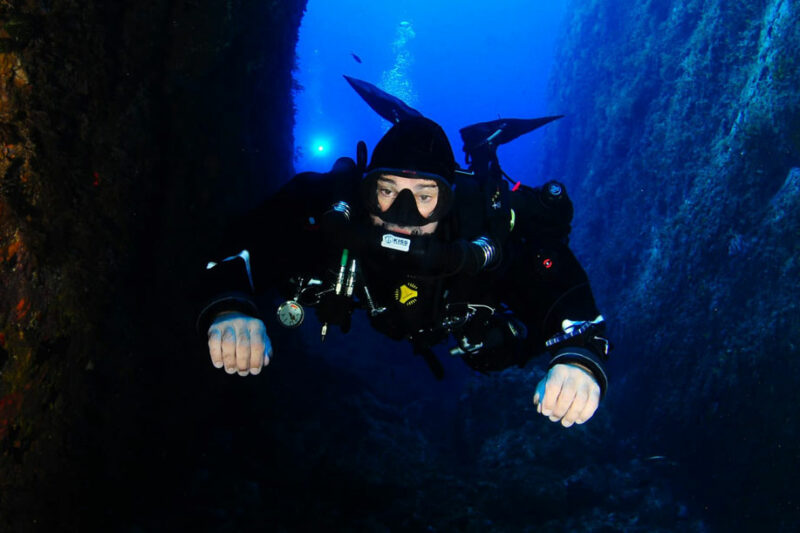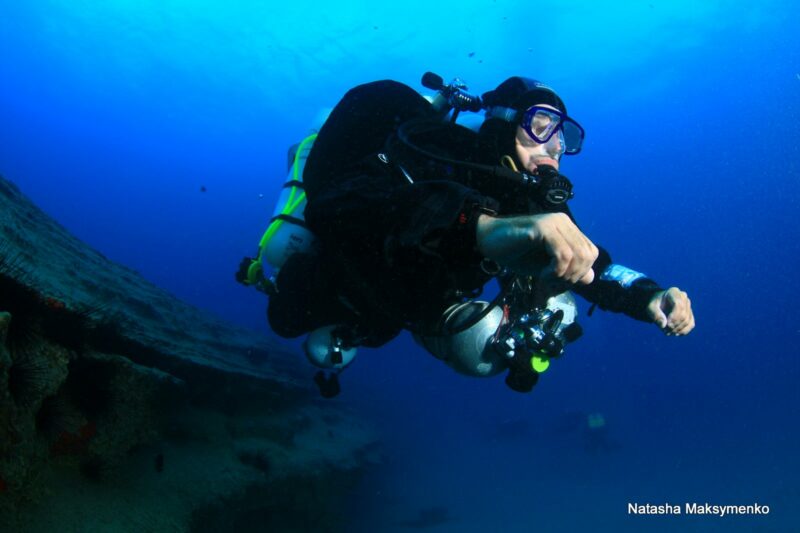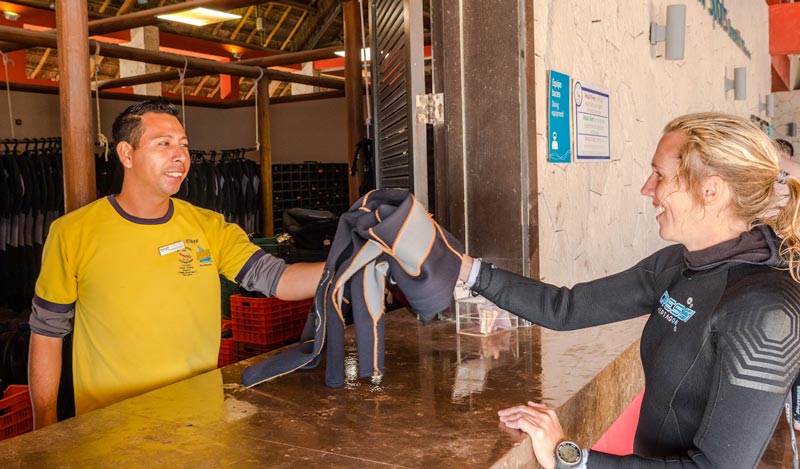3. How Do Dive Rebreathers Work?
So, the semi-closed rebreather was invented. In this scuba rebreather, instead of putting O2 in the bag, we put another gas mixture with Nitrox.
The diver breathes this gas several times until the O2 content drops too low, then, the rebreather injects this enriched gas again.
The more enriched the gas is, the more times we can breathe and the bottle will last longer.
Yes, we know that the depth is limited by the partial pressure of the O2. For example: with Nitrox 32, the limit is 40 meters/131 feet. But we can use other gas mixes, even Heliox.
Currently, a dive rebreather has a mouthpiece for the diver to breathe through, one or two containers depending on the model, two hoses (one to carry exhaled gas to the container and another to carry recycled gas to the diver), and a compartment filled with soda lime, where CO2 is eliminated. The device is connected to the air cylinder. The way to fill the container, also called the lung, with new air determines the type of rebreather.
4. Types of Underwater Rebreathers
There are two ways to inject this gas: active and passive.
4.1. Active Diving Rebreather
The active diving rebreather or semi-closed implies it injects a fixed amount of gas into the lung to keep the O2 content adequate.
There is a disadvantage. It implies that gas is continuously spent even on the surface while the tank is open.
When putting oxygen and nitrogen all the time, these rebreathers must eliminate the excess gas that accumulates in the container occasionally.
That is why, this kind of scuba rebreather is called semi-closed since every few breaths it releases bubbles through an over-expansion valve.
These systems achieve approximately 4:1 efficiency. In other words, a tank would last 4 times longer breathing with this rebreather rather than with SCUBA.
An example was the Draeger Dolphin which was commercialized in the late ’90s. Within this type there is a more evolved version of the manufacturer KISS, in which pure O2 is injected at a level slightly below the metabolic consumption of the diver, if the diver increases his O2 consumption, doing more intense exercise, he must add the missing O2 manually.
4.2. Passive Scuba Rebreather
A passive scuba rebreather functions with two lungs one inside the other. As we extract gas from the large one it compresses the small one, and in the end, the content of the gas from the small one is eliminated, replacing it with fresh gas. The small bag is adjusted to the size of the large bag so that the percentage of renewal is adequate.
This system is more efficient than the previous one, achieving efficiencies of 10: 1 or 8: 1 depending on the design of the device. Examples of these devices are the RB80 and versions made by other manufacturers.
These systems do not need sophisticated electronics since we calculate the decompression with a lower percentage than the gas we inject. The manufacturer provides this drop in the % according to the unit design. For example, if we dive with a Nitrox 32 we will calculate the decompression with a Nitrox 28. This makes these units simpler, easier, and cheaper to maintain, but their efficiency is not enough, and they are bulky and heavy, so they are falling into disuse, especially since their electronic cousins are becoming more reliable and lighter.
4.3. Electronic Rebreather
Finally, we have the electronic rebreather, which is what we all think of when we talk about rebreathers. These use an electromagnetic valve called a solenoid along with an O2 sensor system and software. When the sensors detect that the amount of O2 is below the level the diver needs, they open the valve allowing O2 to enter until they detect that the O2 is at its proper level. This management is much more efficient reaching efficiencies of 40: 1.




